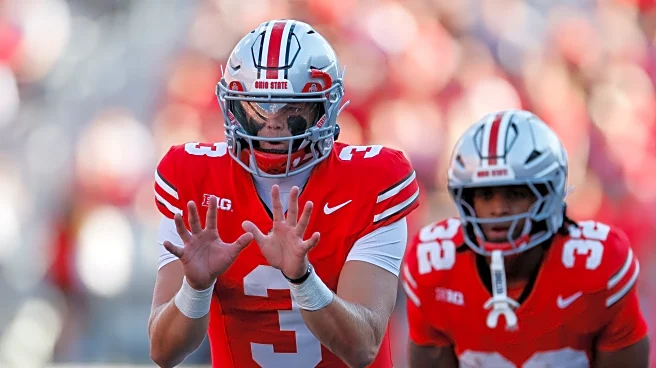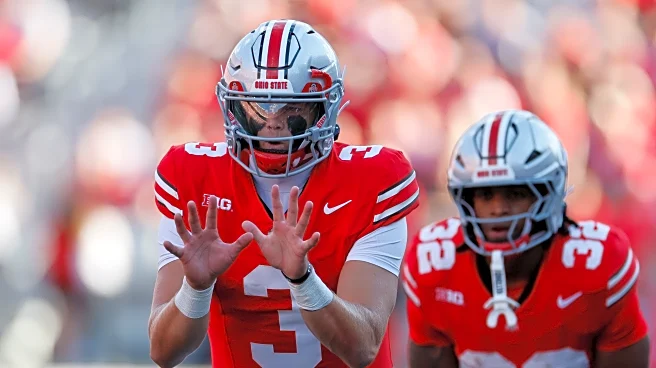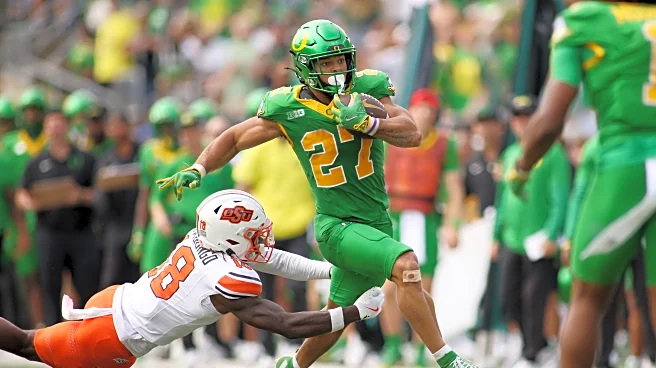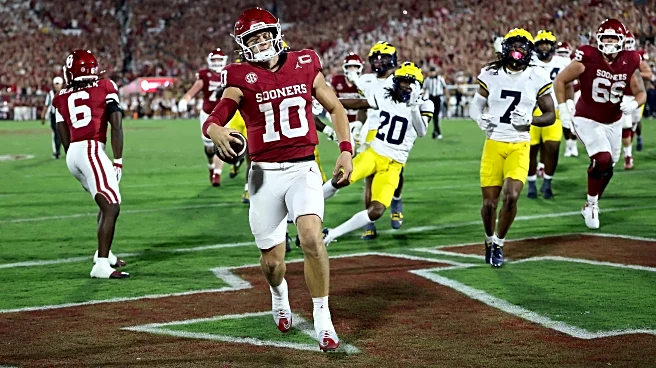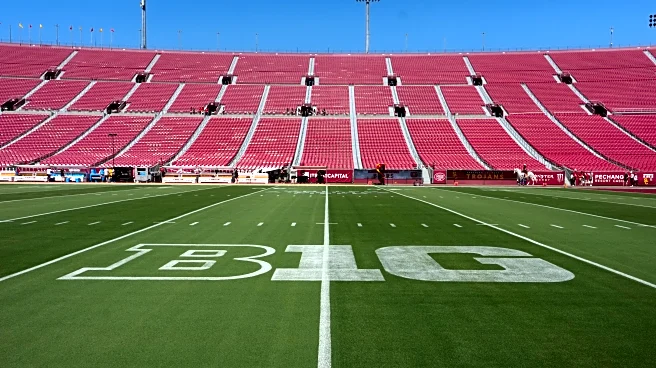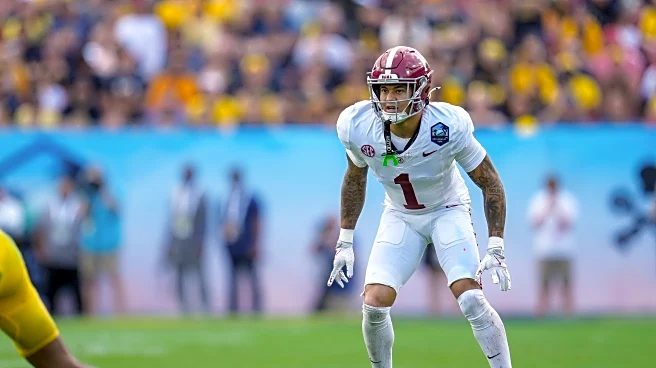What's Happening?
The Associated Press has published its latest Top 25 college football rankings as the season progresses into Week 3. Despite several losses among the top 25 teams over the weekend, the rankings have seen minimal changes. Ohio State, Penn State, and LSU continue to lead the list, followed by Oregon and Miami (Fla.). The rankings are determined by a media panel consisting of 65 members, including Channel 2 sports director Zach Klein, who is the sole TV reporter from the Georgia market with a vote. Klein's ballot, which is published weekly on WSBTV.com, reflects his choices for the top teams, with Ohio State, LSU, and Penn State occupying the top spots.
Why It's Important?
The AP Top 25 rankings are a significant indicator of team performance and public perception in college football. These rankings can influence bowl game selections, playoff considerations, and team morale. For teams like Ohio State and LSU, maintaining a high ranking can bolster their chances for postseason success and attract top recruits. Conversely, teams that drop in the rankings may face challenges in securing favorable matchups and maintaining fan support. The rankings also provide insights into the competitive landscape of college football, highlighting which teams are emerging as strong contenders.
What's Next?
As the college football season continues, teams will strive to improve their standings in the AP Top 25 rankings. Upcoming games will be crucial for teams looking to climb the rankings or maintain their positions. Stakeholders such as coaches, players, and fans will closely monitor these developments, as they can impact postseason opportunities and team strategies. Channel 2 will continue to provide coverage and analysis of SEC football, with Zach Klein and other insiders offering insights every Saturday night.
Beyond the Headlines
The AP Top 25 rankings not only reflect team performance but also influence broader aspects of college sports, including media coverage, sponsorship deals, and university branding. High-ranking teams often receive increased media attention, which can lead to lucrative sponsorships and enhanced visibility for their universities. Additionally, the rankings can affect the cultural and social dynamics within college sports, as they shape narratives around team rivalries and regional pride.


